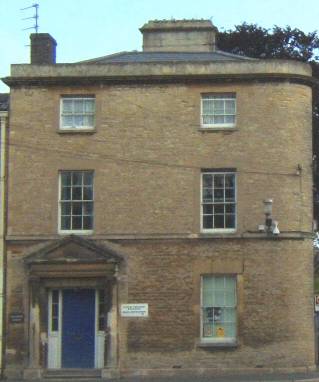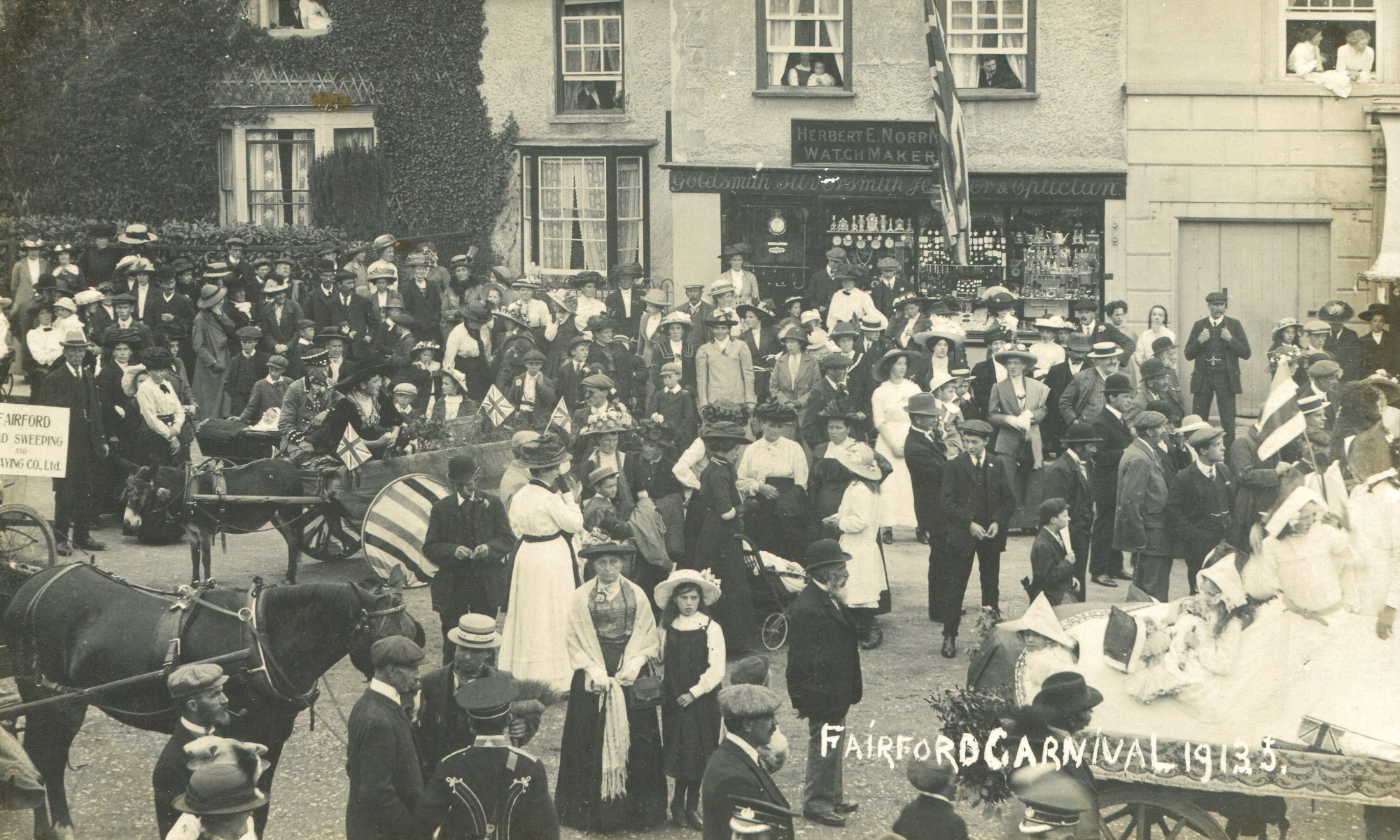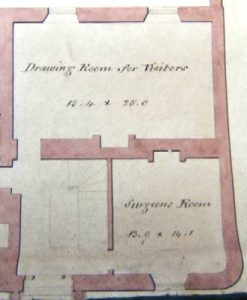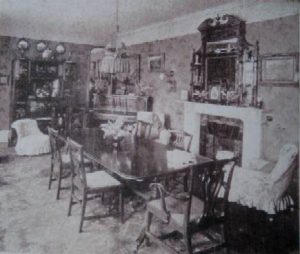
Shelagh Diplock, a 3 x great granddaughter of the Iles family gave an informative and interesting talk about the Iles family and the Fairford Asylum. Alexander Iles, son of Daniel Iles a yeoman farmer of Kempsford, had worked in asylums in London and saw a gap in the market in the Fairford area. His father owned the land called Curtis Piece on Milton Street. He obtained a licence for 10 patients in 1823 and
took patients into his own house. In 1827 he had 13 patients, but in 1834 the Poor Law Amendment Act increased the intake of pauper admissions and Alexander quickly started to build to accommodate them. From 40 patients in 1829 the number of patients was over 119 according to the 1841 census and by 1844 there were 140 patients of whom 119 were paupers. Charles Cornwall was the first physician and had as an apprentice John Hitchman who married Mary Ann Iles and after qualifying in London became head of a new model asylum in Derbyshire. John Hitchman’s experience may have helped with the policy of non-restraint that was adopted at Fairford.
In 1856 Alexander died and left everything to Daniel, his eldest son. At that time there was a change in government policy and the County Asylum was enlarged to admit all paupers so that by 1859 there were only 77 patients and by 1861 only 49 patients. Despite the loss in revenue this reduced the strain on the Asylum’s resources as patient numbers had reached almost 200. During the mid-1860s Daniel and his wife Susan were joined by their eldest son, another Daniel, who qualified as a surgeon in 1864. Albert Iles, another son moved back to Fairford in 1861 from his doctor’s practice in Cirencester. He bought Croft House and had hoped to join Dr Charles Cornwall’s practice but tragedy struck in July 1863 when he was killed when his phaeton carriage suffered an accident
Mid 19th century – the corresponding interior ground floor plan
Picture from the Gloucestershire Archivest leaving Ellen pregnant with their eighth child. Some time before 1870 Ellen Matilda Iles set up a small female private asylu
m in Croft House. In 1856 Alexander died and left everything to Daniel, his eldest son. At that time there was a ch
ange in government policy and the County Asylum was enlarged to admit all paupers so
that by 1859 there were only 77 patients and by 1861 only 49 patients. Despite the loss in revenue this reduced the strain on the Asylum’s resources as patient numbers had reached almost 200. During the mid-1860s Dan
iel and his wife Susan were joined by their eldest son, another Daniel, who qualified as a surgeon in 1864. Albert Iles, another son moved back to Fairford in 1861
from his doctor’s practice in Cirencester. He bought Croft House and had hoped to join Dr Charles Cornwall’s practice but tragedy struck in July 1863 when he was killed when his phaeton carriage suffered an accident leaving Ellen pregnant with their eighth child. Some time before 1870 Ellen Matilda Iles set up a small female private asylum in Croft House.
Susan Iles died in 1883 and Daniel in 1887. Dr Daniel and Henry, their sons took over the asylum until 1899 when Danie
l died and his son Francis, another doctor, decided not to take over the business. The Retreat, as the asylum was also known, was sold to Dr A C King Turner in 1901 and it continued as an upmarket private asylum until 1944.
November 27th 2008
As a follow up to the talk the previous week, a group of members visited Coln House School and were shown round by the headmaster, Chris Clarke and head of care, Sandra Rogers. It was fascinating to detect what was left of the Iles buildings and compare the 1930s brochure of Dr A C King-Turner with the present day buildings. We told of the school’s ethos at the present time and we wondered how the head master and staff cope in such a rabbit warren of buildings. Grateful thanks to Coln House School for their time and hospitality.


